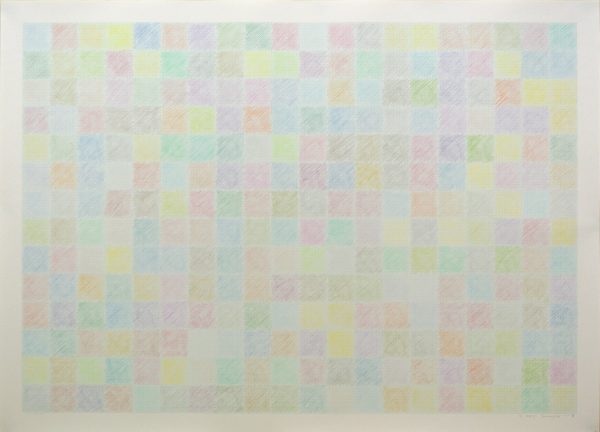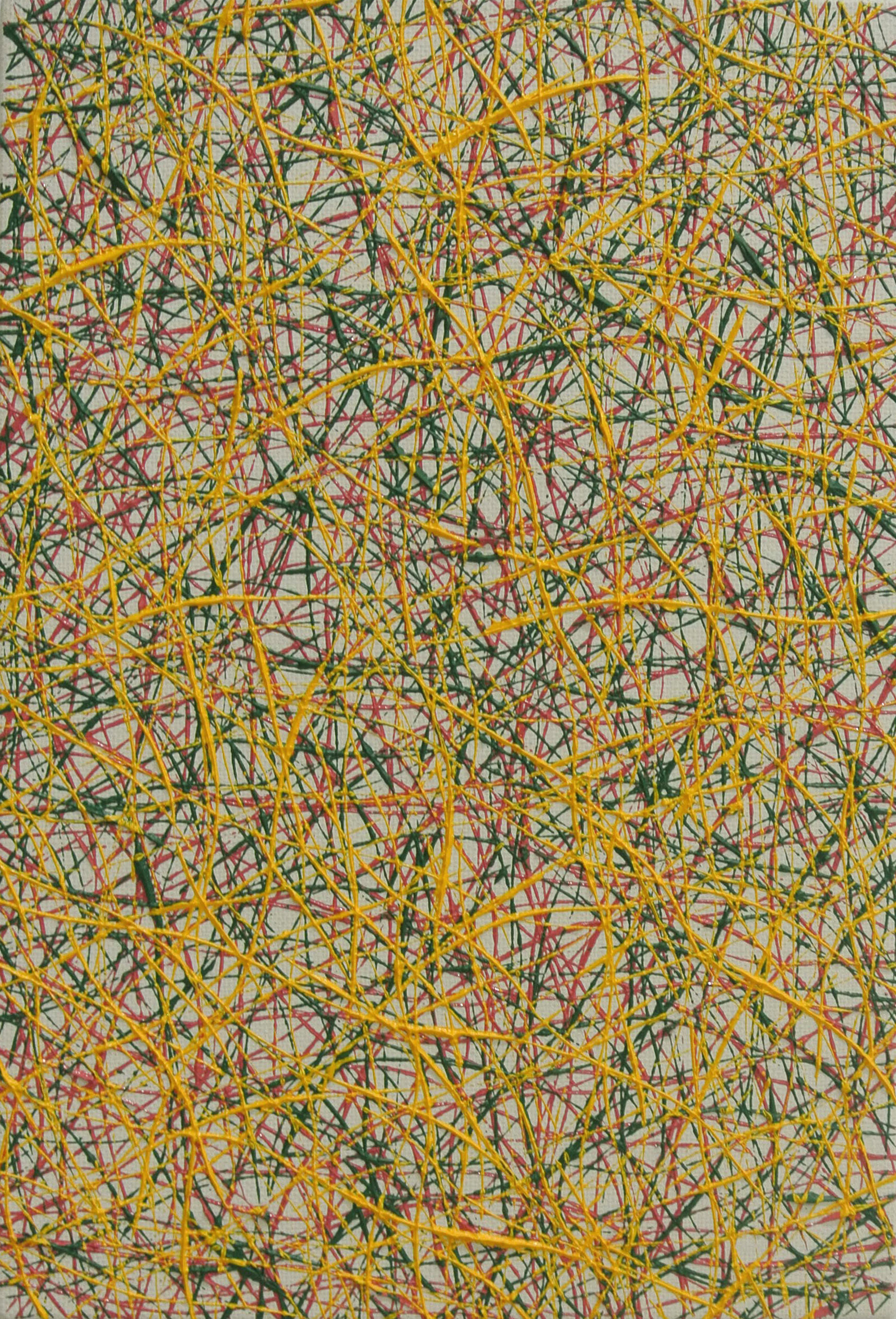Kenji Inumaki was born in Osaka in 1943. While still at the Department of Advanced Art Sculpture of Kyoto University of Education, Inumaki exhibited his works including “Untitled” (1969) made with a cotton cloth that appears to be slanted glass in the Kyoto Independents Exhibition and attracted public attention. In 1970, Inumaki participated in the landmark event in postwar art history, the 10th Japan International Art Exhibition: Between Man and Matter (Commissioner: Yusuke Nakahara, Tokyo Metropolitan Art Museum, 1970). His works produced from the end of the 60s to the early 70s, such as three-dimensional pieces of cubes formed by tying wires and huge works of brown paper taped to walls, can be seen as a critique of the minimal art that flourished during the same period, especially in the West. Inumaki’s works were also presented in the 8th Paris Youth Biennial (1973) and are considered historically important as one of the significant visual languages contemporary to mono-ha. From the mid-1970s, Inumaki shifted his primary art form to two-dimensional, such as drawings shaded with colored pencils on a square of grid paper, paintings depicting grids by an ink bottle, and works with lines created by narrow gaps between painted surfaces. However, his production methodology of arranging basic structures in space and planes has been continued to develop until his later work. Around 1990, Inumaki began creating the “White works series” that has become his signature; this series is painted on canvas with white paint, then scratched over linearly with a nail, and then painted over and over again with thicker layers of paint, rendering unique lines that seem delicate and fragile, yet emanates a strong sense of materiality. By eliminating the intention of “making a work of art” and reducing his practice to the repetition of simple acts, Inumaki explores another possibility of expression on a flat surface while rejecting the value of painting. Inumaki sadly passed away in Kyoto in 2023.
His major solo exhibitions include Kenji Inumaki, Gallery 16 (1969); Kenji Inumaki, Shinanobashi Gallery (1973); Kenji Iumaki, Matsumura Gallery (1974); Kenji Iumaki Exhibition (1979); Kenji Iumaki Irodoru, INAX Gallery Osaka (1987); Art in Kyoto: Yesterday, Today, Tomorrow 18 The Works of Kenji INUMAKI, Kyoto City Museum of Art (1996); Kenji Inumaki: Shaping as Evidence, INAX Gallery 20 (1996); and Kenji Iumaki: STUDY UMBER…, INAX Gallery 2 (1996). Inumaki also participated in various group exhibitions including The 1st International Exhibition of Contemporary Sculpture, Hakone Open-Air Museum (1969); A Perspective on Contemporary Art, The National Museum of Modern Art, Kyoto (1969); the 4th Contemporary Japanese Sculpture Exhibition, Ube City Outdoor Sculpture Museum (1971); Sukkari Damena Bokutachi, Kyoto Municipal Museum of Art (1971); Kyoto Biennale, Kyoto Municipal Museum of Art (1972); Japan: Tradition und Gegenwart, Hetjens Museum (1974); Contemporary Japanese Art Exhibition, The Korean Culture and Arts Foundation (1981); Five Japanese Contemporary Artists, Hetjens Museum (1983); Matter and Perception 1970 Mono-ha and the Search for Fundermentals, The Museum of Modern Art, Saitama and others (1995); Reconsidering Mono-ha, The National Museum of Art, Osaka (2005); The Link Between Words and Art: An Homage to Nakahara Yusuke, Gallery Yamaki Fine Art (2012); and Frame and Wave, Toyota Municipal Museum of Art (2023).
Inumaki’s works are in the collections of major museums in Japan, including the National Museum of Modern Art, Tokyo; the National Museum of Art, Osaka; the Museum of Modern Art, Saitama; Toyota Municipal Museum of Art; Kyoto Municipal Museum of Art; Takamatsu City Museum of Art; Iwaki City Museum of Art; and Ube City.
Artwork © by Kenji Inumaki
All other content © Gallery Yamaki Fine Art
All rights reserved.



